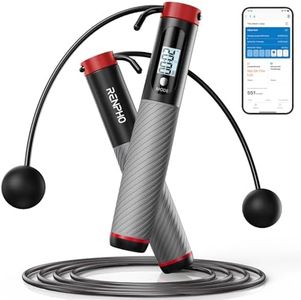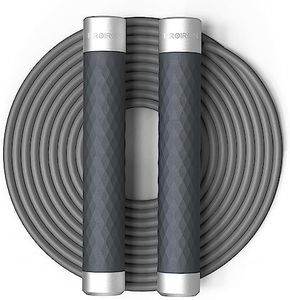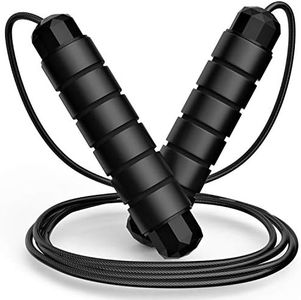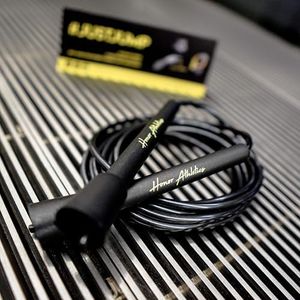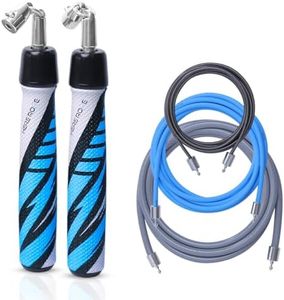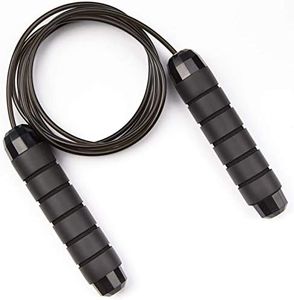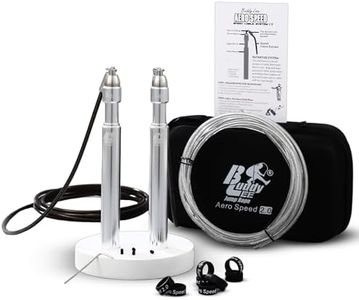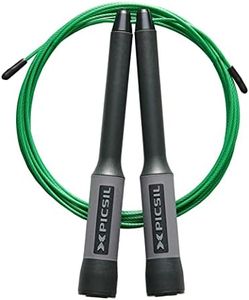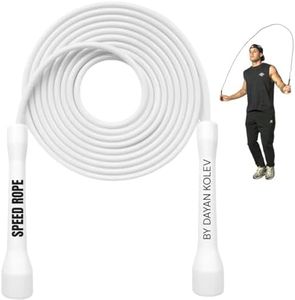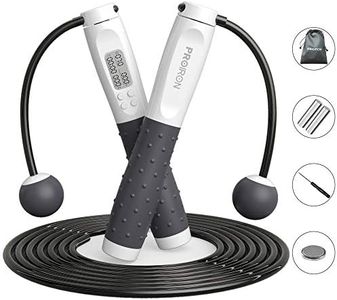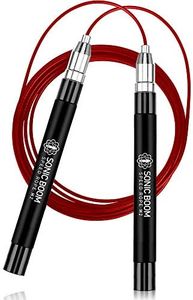We Use CookiesWe use cookies to enhance the security, performance,
functionality and for analytical and promotional activities. By continuing to browse this site you
are agreeing to our privacy policy
10 Best Speed Jump Ropes
From leading brands and best sellers available on the web.By clicking on a link to a third party's website, log data is shared with that third party.
Buying Guide for the Best Speed Jump Ropes
Choosing a speed jump rope can make a big difference in your workout, whether you’re looking to get fit, improve coordination, or train for speed. The right rope should feel comfortable in your hands, move smoothly, and match your skill level and workout goals. Before you buy, think about how you plan to use the rope and what features will help you enjoy skipping and reach your fitness targets.Rope MaterialRope material is what the cord itself is made from, and this affects durability, speed, and handling. Common materials include PVC, steel cable with coating, and sometimes leather. PVC ropes are lighter and suitable for beginners or casual use, while coated steel cables are faster, make quicker swings, and are preferred for speed or advanced workouts. Choosing a material depends on how fast you want to spin the rope and how often you plan to use it—if you’re just starting, softer PVC is easier on beginner shins, but if you like fast, intense sessions, a coated steel cable is a better option.
Handle DesignHandle design refers to both the shape and material of the jump rope handles, which affects comfort, grip, and control. Handles can be short or long, thick or thin, and made from foam, plastic, or aluminum. Shorter, slimmer handles offer lighter weight and can spin faster, which is good for speed, while thicker or longer handles may give more control and a comfortable grip for longer sessions. Foam handles help with grip if your hands sweat a lot. Consider how a handle feels when you hold it and think about whether you prefer more control or faster movement.
Rope Length AdjustabilityRope length adjustability is the ability to change how long the rope is to fit your height and jumping style. Adjustable ropes are best for beginners, growing teens, or anyone who wants to share the rope with others. Fixed-length options are typically chosen by athletes who have a preferred size. To find your length, stand on the middle of the rope and pull the handles up—ideally, they should reach your armpits. If you’re new or unsure, adjustable ropes offer the flexibility to experiment and find what’s most comfortable.
Bearing SystemThe bearing system refers to the mechanism inside the handles that affects how smoothly and quickly the rope spins. Ball bearings allow for smooth, rapid rotations and prevent the rope from tangling, making them perfect for fast skips and tricks. Ropes without bearings might be cheaper but can feel jerky or slow. If you want to practice advanced moves or high-speed skipping, pick a rope with a ball bearing system for the best experience.
Weight of the RopeWeight of the rope is how heavy the rope and handles feel in your hands. Lighter ropes move faster and are ideal for speed work and double-unders, while slightly heavier ropes provide more feedback, making it easier to control rhythm and timing—useful for beginners or cardio-focused workouts. Think about your goal: if you want to develop speed and agility, go light; if you want a bit more challenge or control as you learn, try something with a bit more weight.
DurabilityDurability describes how well the rope stands up to regular use, especially on different surfaces, and how long it will last. Durable ropes are typically made with metal cables, tough coatings, and reinforced handles. If you plan to use the rope outside or frequently, make sure to pick one known for holding up over time, because less durable materials can fray or kink easily. If you’re mostly using the rope indoors, this may be less critical, but active users should make durability a priority.
